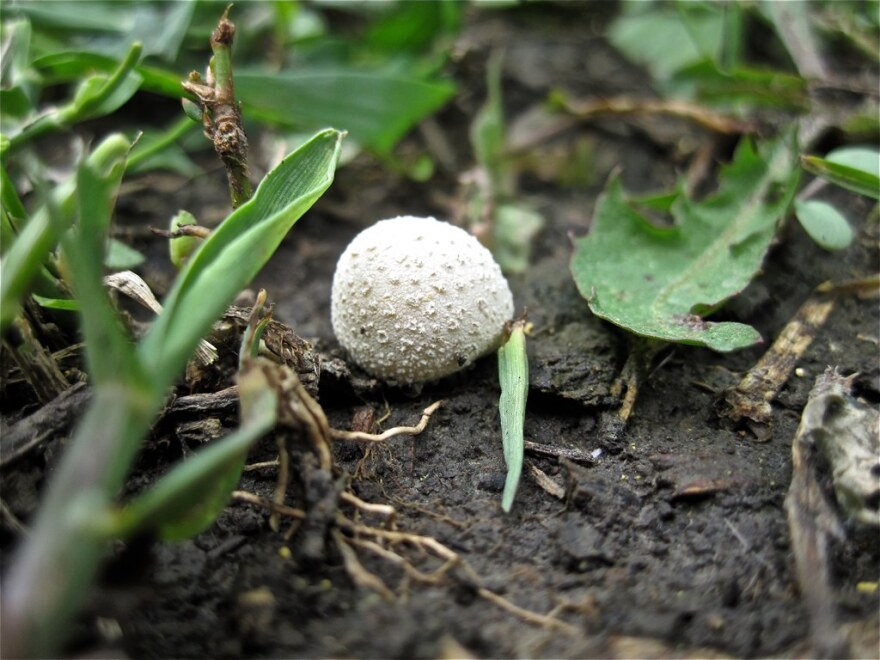I have fond memories of puffballs and their moon because twenty-eight years ago, a friend called me up with some news.
“There’s a lady out on the street,” he said, “with a real big mushroom.”
I went to see the sight, and there, indeed was a young woman holding what was to become the world’s largest puffball mushroom (calvatia gigantea), 18.38 pounds, 77 inches around.
In our conversation years later, the woman told me that her giant fungus (“Puffy, as she called it,”) had made the 1990 and 1991 editions of the Guinness Book of World Records.
Although she had waited a bit too long for the mushroom to be edible, it had experienced an afterlife in the window of a local store until a young boy who came with his mother asked “What’s that strange smell?”
Well, then anyway a larger puffball from Canada superceded it in the fall of ’92.
As for puffball hunting in the moist woods and the chances of setting a record and even creating your own puffball patch, a friend of the woman who found the big one gave me the following suggestion: “You wait ‘til the end of October,” he advised, “and you go back there and find the big old puffballs. They’ll be kind of sagging. Then you beat them with a stick. This green cloud of spores will rise up and then (and he spread his arms wide and made a “poof” sound) -- next year’s puffballs!”
This is Bill Felker with Poor Will’s Almanack. I’ll be back again next week with notes for the first week of early fall. In the meantime, get up early and walk the woods. Look for giant puffballs.



